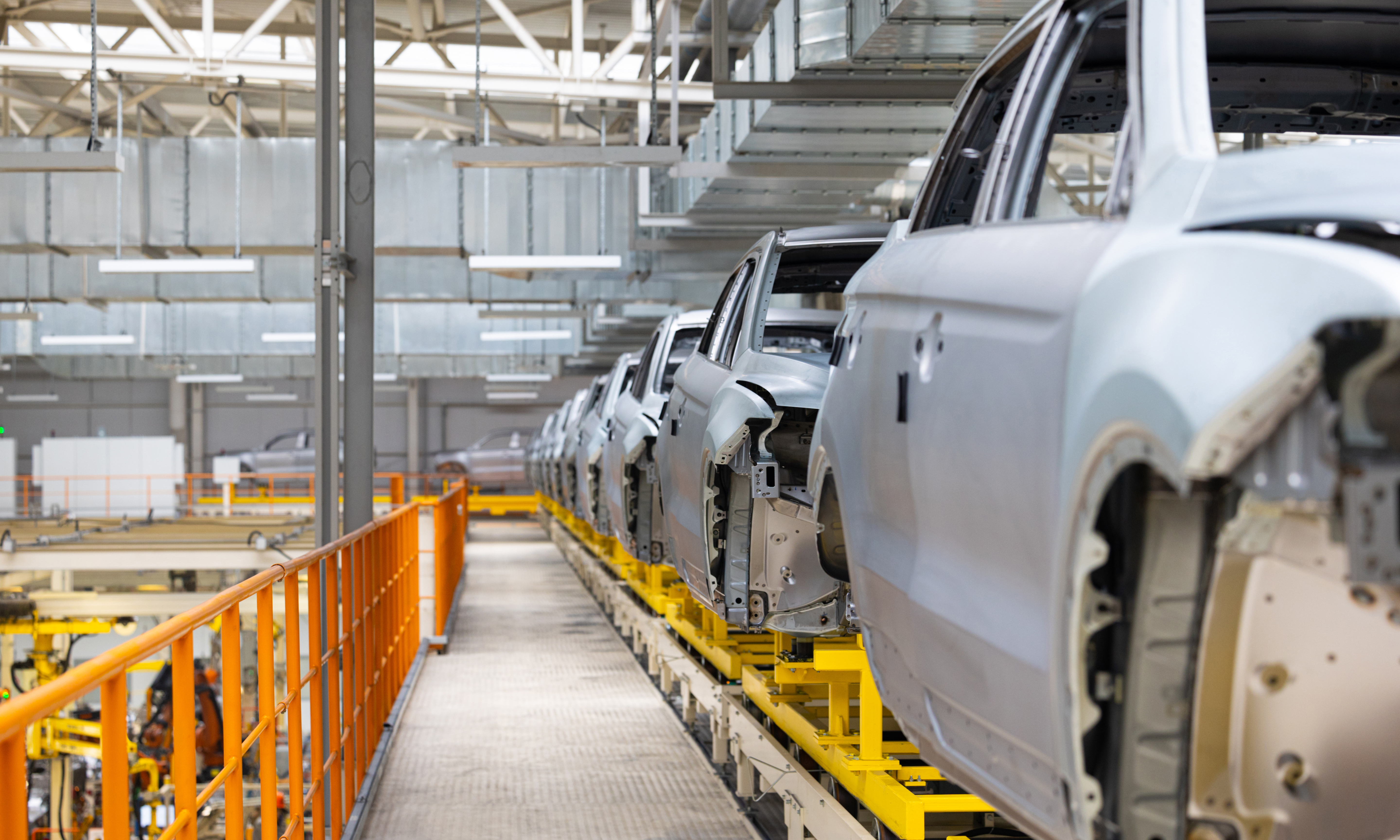On March 20, the Environmental Protection Agency (EPA) announced the final vehicle standards for cars, pickup trucks, and SUVs. These rules set progressively lower limits on tailpipe pollution on vehicles manufactured between 2027 and 2032.
EPA standards aren’t new. There are EPA vehicle standards in place right now. The recently finalized standards are simply a continuation of vehicle standards to protect human health and limit emissions. In fact, to address smog and pollution in many U.S. cities, the Clean Air Act was established by Congress back in 1970. EPA has been regulating vehicle pollution for over 50 years. In 2010, the EPA began regulating carbon dioxide (CO2) as an air pollutant. The recently finalized rules are the latest set of standards, and current clean vehicle technology allows these standards to be the most stringent ever.
The way the EPA vehicle standards are structured, the average of each automaker’s fleet (all of the light-duty vehicles manufactured in a given year) must meet targets of grams/mile of specified pollutants each year. The target amount of average tailpipe emissions gets a bit lower each year, resulting in progressively cleaner cars.
The batch of rules that were just finalized won’t kick in until 2027. For light-duty vehicles such as cars, pickups, and SUVs, the 2032 goal is that the fleet average is 85 grams/mile of CO2. How this goal is reached is largely up to auto manufacturers, which gives automakers a lot of flexibility. They can meet standards by making and selling smaller, more fuel-efficient vehicles, or by employing technologies such as hybrid or battery-electric vehicles to reduce tailpipe emissions to bring down their fleet average emissions. They can also employ a combination of strategies.
Why do these standards matter?
There are two reasons why these standards matter–public health and climate.
Tailpipe emissions are toxic. This is why we don’t run gas vehicles in enclosed spaces. Doing so is deadly. Instead, we run gas vehicles outside where the poisonous gases can dissipate into the atmosphere. When you multiply these poisonous gases by hundreds of millions of vehicles, especially in congested, high-traffic areas, their accumulated emissions can be linked to asthma, heart attacks, cancer, stroke, premature death, and low birth weight of babies. Globally, air pollution from burning fossil fuels has been shown to be responsible for 1 in 5 deaths worldwide. Plus, the EPA standards are working. Since 1990, emissions of key air pollutants have essentially been cut in half.
From a climate perspective, the transportation sector is the U.S. economy’s most polluting sector, with cars accounting for the majority of GHG emissions. A typical passenger vehicle emits over 4 metric tons of carbon dioxide per year–that’s over 8,000 pounds. With close to 200 million registered light-duty vehicles in the U.S. alone, that adds up to a lot of carbon. The EPA vehicle standards are expected to reduce emissions between 2026 and 2032 by 50%.
How will these standards impact me?
EPA vehicle standards are already in place and have been for many years. The new standards won’t kick in until 2027. So right now, you probably won’t notice much of a change. Over the next several years, these standards will continue to trend toward cleaner cars. You may notice more hybrid pickup trucks, more available models of all-electric vehicles and plug-in hybrids, and increased production of smaller fuel-efficient vehicles. In 2020 there were 17 electric and plug-in hybrid vehicles on the market. In part, because of these ongoing vehicle standards, those numbers have grown to 100 models available on the market today.
And money, let’s not forget money. Historically, every $1 spent to reduce emissions under the Clean Air Act results in $9 of benefits in environmental, public health, productivity and consumer savings. Real-world data from California shows that concentrations of zero-emission vehicles lower air pollution and result in fewer asthma emergency room visits. Additionally, EVs cost significantly less to operate and maintain than gas cars. Plus, who wants to spend $50 or more at the pump when that money could be used for something far more fun?
Will everyone need to buy an EV?
One potential pathway to reaching these goals is through vehicle electrification (our personal favorite pathway). Since EVs have zero tailpipe pollution, they can go a long way in helping automakers reach their emissions reduction goals. They can also go a long way toward improving air quality and reducing climate-changing emissions. Not everyone will need to buy an EV– even by 2032. As projected, we expect about 56% of new vehicle sales to be electric by 2032. So that leaves about 43% of light-duty vehicle sales that are NOT electric.
Right now, before the rules even take effect, surveys show that between 25% and 38% of drivers would consider purchasing an EV as their next car. Keep in mind that in surveys that asked whether the respondent might consider buying or leasing an EV, that number was 68%. If 68% of drivers would consider an EV now, then reaching a goal of EVs being 50% of new car sales eight years from now seems reasonable.
Leasing is a great way to get into a new EV. Not only do they give you a low-risk way to see how an EV could become your daily driver, but many manufacturers also pass on the federal tax credit through leases. This means you could get a lease with no money down, or you can get lower monthly lease payments. Also, 37% percent of households have more than one car. For first-time EV drivers, EVs make a great second car. Multi-vehicle households who are concerned about range and charging can use the EV for a commuter car and use the gas car for road trips. Many households with more than one car switch to one EV to start with but report that all of the drivers in the family enjoy driving the EV so much that over time, they switch their other cars to EVs.
A note about technology and innovation
These clean vehicle regulations are strengthened by additional Biden Administration policies that are accelerating clean vehicle innovation. The Inflation Reduction Act (IRA), which was passed in 2022, has led to billions of dollars of investment in U.S. EV production, battery manufacturing, and research. A report measuring the impacts of the IRA attributed the creation of over 179,000 new EV jobs in the first year alone. This is important for the U.S. economy since automobiles are one of the United States’ biggest exports. Globally, EV markets are further along than they are here in the U.S., with EVs making up 16% of all vehicle sales. Over 1 million EVs were registered around the world just in January of 2024. In order to stay globally competitive, U.S. automakers are going to have to focus on electric vehicles.
Finally, a word about technology. These vehicle standards will start in 2027 and be in effect for five years until 2032. 2032 is eight years away. In technology and innovation terms, thats a VERY long time. Think back to EV technology eight years ago. In 2016, with the exception of the very expensive Tesla Model S (about $89,000 in today’s dollars), the Nissan Leaf was the only other vehicle with a range of more than 100 miles. Since then, EV technology has come a long way. The average range of new EVs is now 270 miles on a full charge, enough for most people’s weekly commute.
Will gas cars go away?
Nope. Not during the time these standards are in effect. In fact, based on modeling, it is likely that these rules allow for close to 50% of vehicle sales to be gas cars, pickups, and SUVs in 2032. These standards only regulate new vehicle sales, so there will still be lots of new and used gas cars available on the market and on the roads. According to a preliminary analysis by Chris Harto of Consumer Reports, we can expect that in 2032, about one in five light-duty vehicles on the road will be electric or plug-in hybrid electric. But, we wouldn’t be surprised if that number is higher–not because of regulations, but because EV drivers love driving electric. Based on Plug In America’s research, 90% of EV drivers indicate that they are likely or very likely to purchase an EV as their next vehicle. For the vast majority of EV drivers, once they make the switch, there is no going back.

